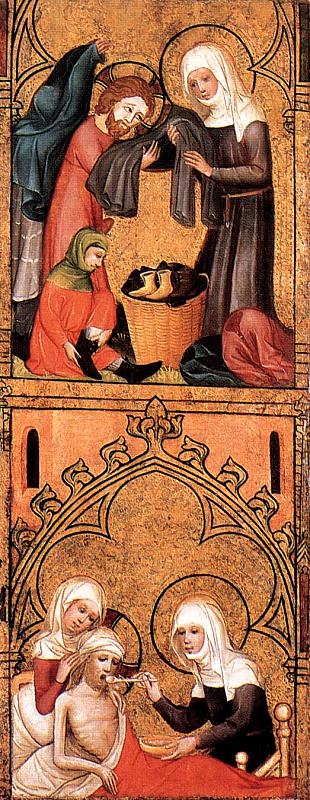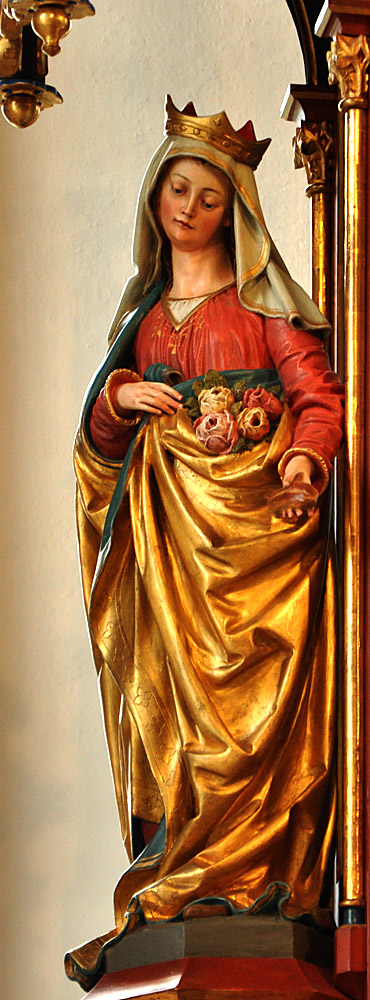In portraits she often has a basket of bread or flowers, as in the second and third pictures. The flowers refer to a story that hagiographers of the later 13th century commandeered from the life of St. Casilda, whose Saracen father caught her taking a basket of food to Christian prisoners. When he looked into the basket, he found only roses.1
Being of royal birth, the saint is sometimes pictured with a crown, as in the second picture at right.
ATTRIBUTES
- Bread and/or flowers in a basket or a fold of her mantle
- Crown
DATES
- Feast day: November 19 traditional, November 17 since the reforms of 1969
- Lived 1207-1231
BIOGRAPHY
- Golden Legend #168: html or pdf
- "St. Elizabeth's Life," Bokenham, 240-66
- Butler, IV, 386-91
- Wolf, The Life and Afterlife of St. Elizabeth of Hungary
MORE IMAGES
- 1516: in Holbein the Elder's St. Sebastian Altar
Prepared in 2014 by Richard Stracke, Emeritus Professor of English, Augusta University, revised 2015-10-30, 2018-01-21.

Putting the crossed halo on two recipients of Elizabeth's charity, this artist recalls Christ's words in Matthew 25:40, "as long as you did it to one of these my least brethren, you did it to me." (See the description page)

St. Elizabeth with her bread and flowers (Flemish manuscript illustration – see the description page)

In Taddeo di Bartolo's painting (14th/15th century) the basket has flowers rather than bread. (See the description page)